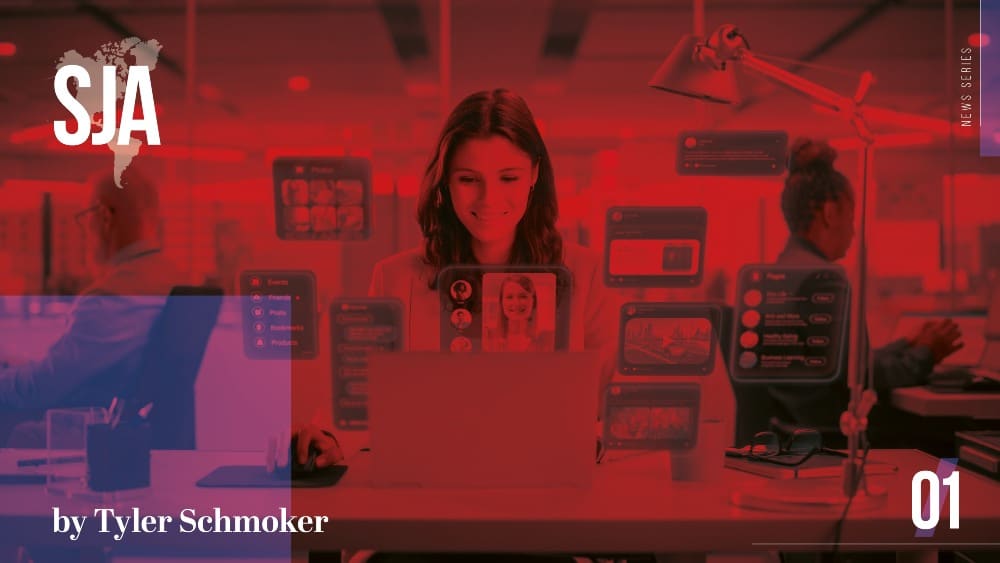A journey into social media for security professionals: Part 1


Victoria Rees
Share this content
In a new and exclusive series with Security Journal Americas, Tyler Schmoker, MPA, PROSCI, explores how LinkedIn became so social and a key social media vehicle for security professionals to advance their progression.
Article Chapters
TogglePart 1: What happened?!
In this three-part series, I’ll be sharing my own journey into the evolution of LinkedIn, through the lens of a relative “unknown” who went on to become one of the more recognized LinkedIn content creators in the security industry, and let me tell you, it’s been one wild ride.
I’ll also be sharing insights into how exactly I pulled it off!
Before diving right in, let’s first set the stage and take a look back at where it all started, in order to gain a better understanding how LinkedIn, aka “The World’s Largest Professional Network”, went from being an unassuming job board and resume repository, that morphing into a full-scale social media platform hosting over one billion users globally.
Looking back now, it’s mind-boggling to think about just how long LinkedIn has actually been around.
When the social media site launched in early May of 2003, George W Bush was still in office, the Iraq War was still a few weeks from kicking off and the first iPhones wouldn’t be released for another four years.
To really put it into perspective, LinkedIn launched before Facebook, Twitter, YouTube, Instagram, TikTok and even before MySpace!
During the early 2000s, leading well up into the 2010s, LinkedIn represented a unique niche offering, specifically focused and tailored towards the polished professional crowd.
At the time, LinkedIn’s initial offering was geared more exclusively towards jobseekers and recruiters, and eventually it became a place where the newsfeed was dominated by company-sponsored ad-style content.
The social media site filled a critical need for professionals that spanned virtually any and every industry, globally.
This made LinkedIn a go-to networking site for middle managers and executives working in the security field.
Over the next nearly 20 years, LinkedIn would continue to make refinements to the platform and see its membership grow, albeit less rapidly than some of the other more mainstream social media outlets previously mentioned.
In March 2006, LinkedIn achieved its first profitable month and by April 2007, the platform had reached 10 million registered members.
In February 2008, the first-generation mobile app of the social media site went into production.
Yet, even with this incremental growth and refinements to the platform, LinkedIn continued to lag behind other social media platforms in terms of growth and in doing so gained a reputation as being the “boring social network”.
It seemed that this same highly niched approach that had once made LinkedIn a unique offering, was beginning to show signs of age, representing a platform that was no longer keeping pace with contemporary trends in modern professional life.
Stuffy executive photos, relatively limited diversity, “great opportunity” employer job post reshares and company-sponsored ads were the main sources of content and not a whole lot else was happening in terms of broader mainstream audience appeal.
As for the individual end-user experience, it had all the fit, finish and feel of a B2B transaction and a highly commoditized one at that.
This was a time where the common LinkedIn member story was as follows:
- Create a LinkedIn social media account and profile, because that’s just what you have to do
- Hope you didn’t forget your password and check LinkedIn once a month just to see what’s happening. Not much, rinse and repeat
- Update your profile when you’re starting a new job search
The end….
Then, the LinkedIn script flipped.
The company hadn’t made any noticeable shifts in strategy, but just like that the world changed in a big way.
Seemingly overnight “life happened” for LinkedIn’s target user demo of working professionals.
The early days of the COVID-19 pandemic led to cascading effects that ushered in an era of economic disruption, stay-at-home mandates/lockdown orders, layoffs, the rise of remote work, widespread professional and occupational uncertainty and a lot less options available for people seeking to socialize with fellow colleagues about the lighter side of professional life, both at and outside of the office.
Like that, the same way LinkedIn had served as a networking platform where a seasoned professional could transact digitally some nearly two decades earlier, it had now become a virtual watercooler and happy hour where professionals could come together to interact via social media about all manner of business, professional development, the future of work, mental health and work-life-balance, and life in general.
In the darkest days of the pandemic, the social media site was undergoing a platform renaissance that saw platform engagement surge.
LinkedIn Content Creators from various industries, security included, were beginning to make their mark, and the LinkedIn community was actively redefining the cultural norms around what it meant to be a successful working professional.
In November 2023, just over 20 years since it’s launch, LinkedIn announced that membership had surpassed one billion registered users.
Keep an eye out for Part 2 of this series – coming out 2 May!
About Tyler
Tyler Schmoker is a retired Army Combat Arms Senior Non-commissioned Officer, former Paramilitary Advisor and Strategic Projects Consultant to Fortune 500s.
He has worked in corporate security, strategy, project/program management and tech. He is an avid Alpine climber and endurance athlete.
Tyler is the Founder and Principal at Winsly LLC, a high-performance consulting and advisory services firm.
He is also the creator of LinkedIn Tradecraft; a course offering that incorporates human psychology, social sciences, Fortune 500 consulting and military intelligence best-practices into comprehensive LinkedIn strategies.
Connect with Tyler on LinkedIn here.


